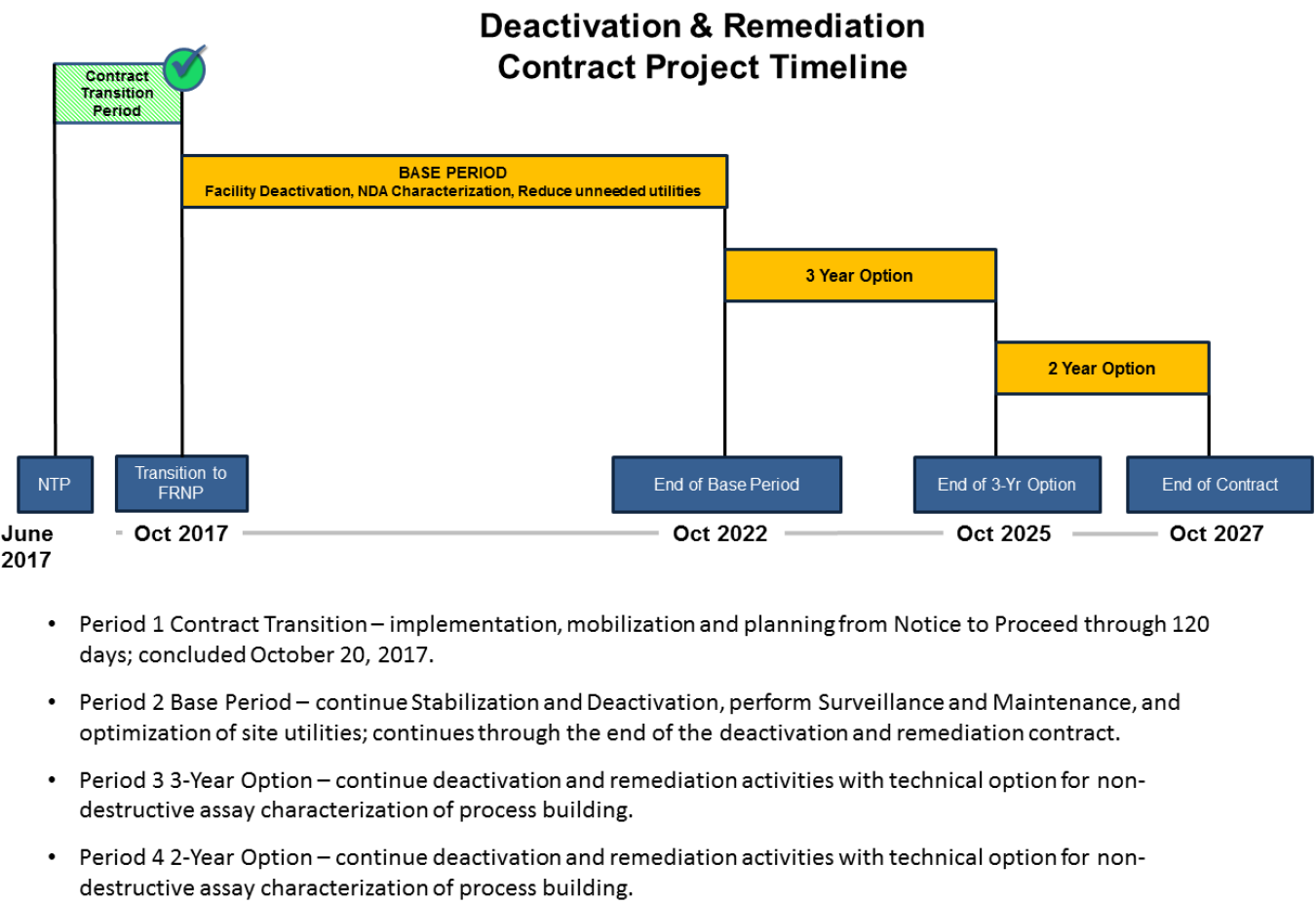In May 2013, the United States Enrichment Corporation (USEC), a publicly held company that had leased the Paducah Gaseous Diffusion Plant (PGDP) facilities for enrichment operations for the 20 years following the Energy Policy Act of 1992, made the decision to cease enrichment and returned the leased facilities to DOE. DOE and USEC completed the transition and return of the plant’s process buildings and other facilities in October 2014. When transition was complete, DOE began activities for facility deactivation and infrastructure optimization of the site. Since deactivation activities began, more than 100,000 gallons of PCB oil, 371,000 gallons of lubrication oil, and 8.5 million pounds of refrigerant have been removed from the process buildings, eliminating hazards and reducing the amount of maintenance required for each building. Additionally, optimization of the site's infrastructure, such as the consolidation of the site’s four switchyards and replacement of its large coal-fired steam plant, continues to ensure the changing needs of the site are being met while reducing future operations and maintenance costs.
Key priorities for deactivation
- Protect workers, the public, and the environment.
- Comply with regulations and requirements, including administrative requirements.
- Reduce risk by facilitating decommissioning work.
- Establish a low-risk facility status.
- Fulfill commitments to stakeholders.
- Facilitate low-cost surveillance and maintenance after a facility is deactivated.
- Plan cost reduction dollars into deactivation and demolition.
Optimization of Site Infrastructure
- 3,000 megawatts were used during peak enrichment at the site, enough to power a city the size of Washington D.C. The current use is approximately 10 megawatts.
30 million gallons of water a day were used to meet operation needs. Today only about 3 million gallons a day are used – enough to meet 30% of demand for a city the size of Paducah.
300,000 lbs/hr of steam, enough to heat 4,400 homes, were used to supply heat to facilities and process equipment. Today, average use is 5,000 lbs/hr.

PGDP Deactivation Project Scope Major Activities
Facility Stabilization
Preparation and/or removal of nuclear materials and contaminants from facilities.
Stabilization activities are performed during early stages of facility deactivation.
Facility Deactivation
Removal of radioactive and hazardous materials
Shut down facility systems
De-energize equipment in preparation for long-term maintenance and cleanup
Infrastructure Optimization
Scale down and optimization of utilities including water, sewage treatment, and steam to meet the needs of the project
Optimization Studies Include:
Steam, Air, Nitrogen and Chilled Water
Water Treatment Facilities
C-100 Building
Sewer Evaluation
Deactivation Project Scope and Timeline


